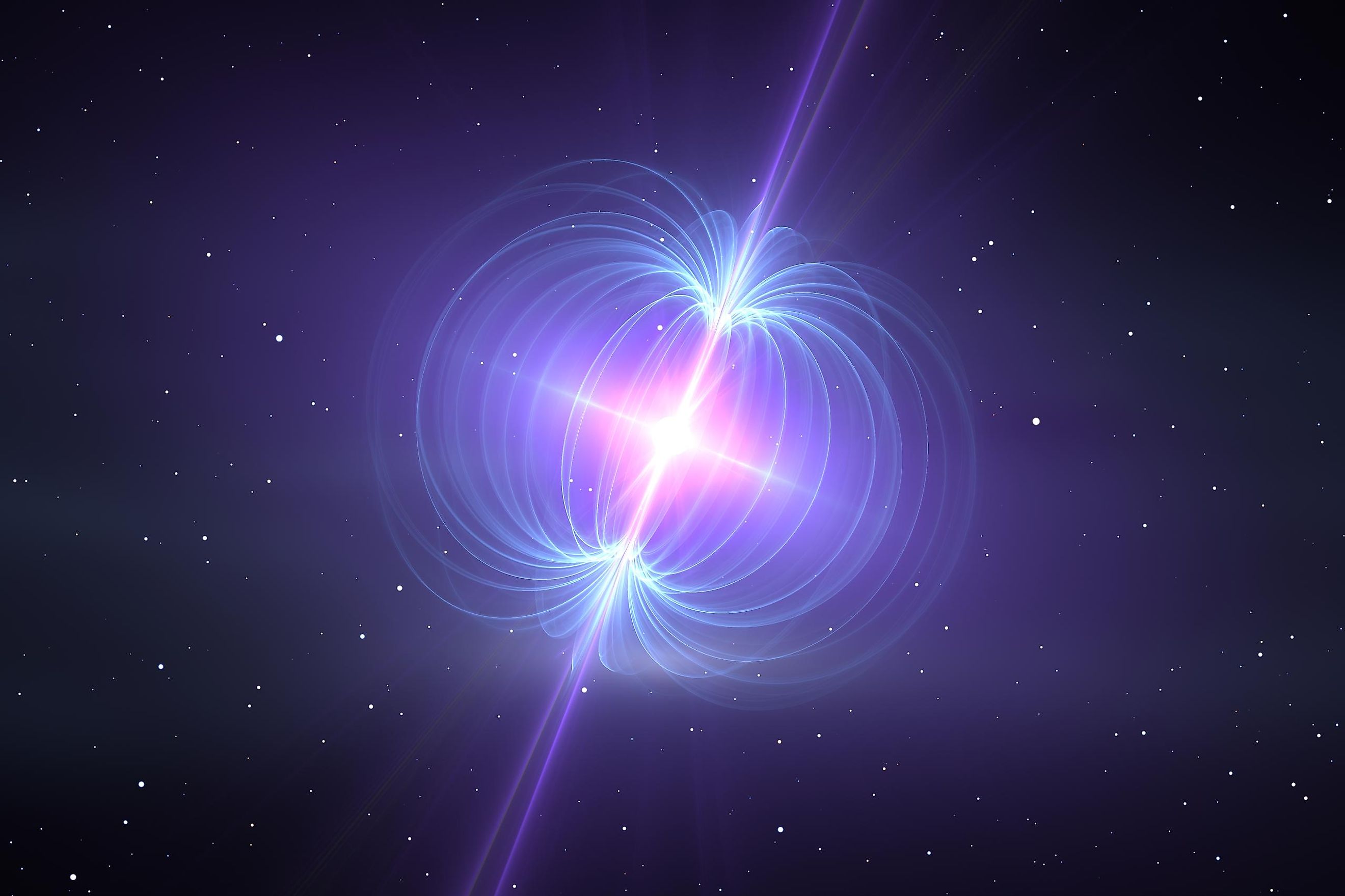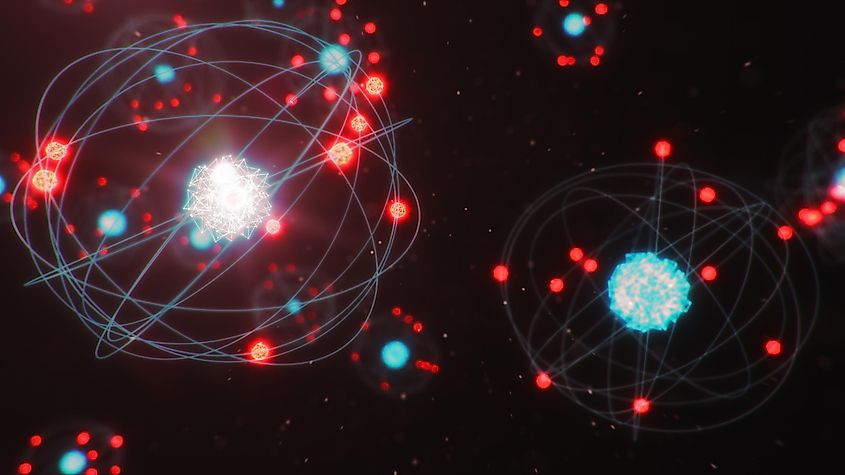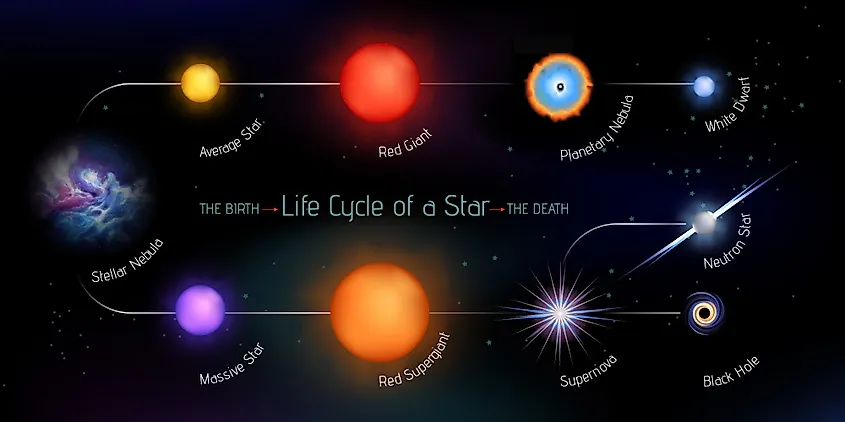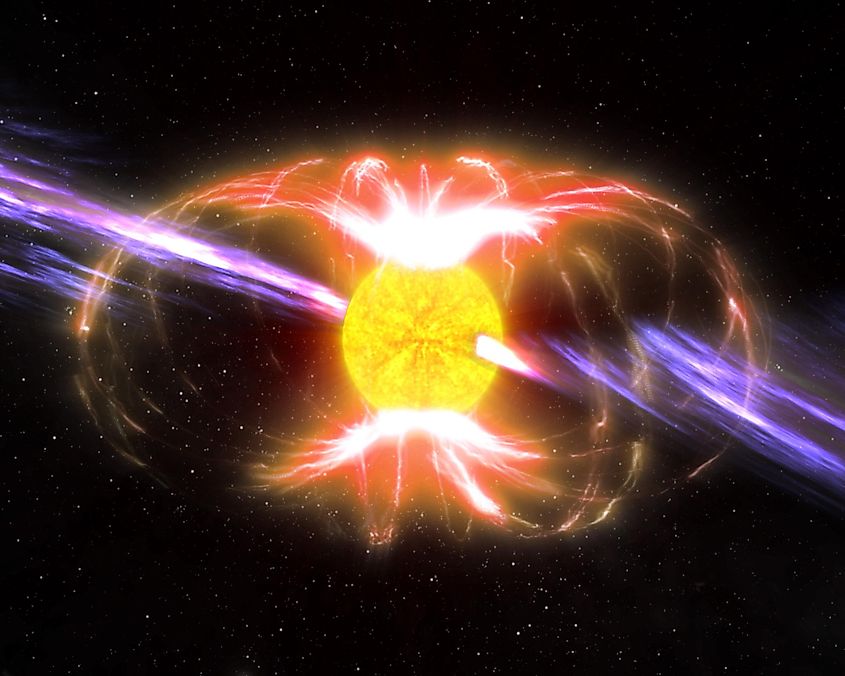
What Is A Neutron Star?
The universe is home to a wide array of odd and exotic objects that seem to defy logic. There are things in this universe that are the very definition of strange. There is perhaps a no better example of how strange the universe can be than neutron stars. Their very existence is something straight out of science fiction, and they are a perfect example of something that defies our earthly logic. What exactly is a neutron star? How do they form? How do they behave?
How Does Matter Stay Together?

Prior to any discussion on what a neutron star is and how they form, it is important to discuss the laws of physics that are at play during the formation of a neutron star. This discussion begins with a simple yet profound question: what is keeping matter from collapsing in on itself? For the most part, matter seems relatively stable. After all, everyday objects don’t just collapse in on themselves. Between every two atoms in the universe, there exists a physical pressure that keeps them apart. Interestingly, the distance between individual atoms is so large that everything in the universe is mostly empty space. If the distance between atoms were not as vast as it is, all forms of matter would quickly collapse. Thankfully, the laws of physics keep atoms apart, and this is due to a principle of physics called the Pauli Exclusion Principle. According to the Pauli Exclusion Principle, no two fermions (fermions are a class of particles that includes protons, neutrons, and electrons) can occupy the same region of space at the same time. Basically, no two protons, neutrons, or electrons can occupy the same region of space at the same time. The Pauli Exclusion Principle is the reason why matter doesn’t collapse in on itself. Since no two fermions can occupy the same space, they maintain a distance between themselves. The pressure between atoms described by the Pauli Exclusion Principle is called electron degeneracy pressure. In order to overcome electron degeneracy pressure, you would need to somehow squeeze atoms together. In order to do that, you would need an immense amount of pressure. If you want to find something that has this kind of pressure, look no further than the stars in the sky.
How Do Neutron Stars Form?

There exists a critical mass that, if any object in the universe exceeds, will be capable of overcoming electron degeneracy pressure. This mass is approximately 1.4 times the mass of the Sun. Any star that is more massive than this number will have the potential to overcome electron degeneracy pressure. How does a star do that? When a massive star exhausts its supply of usable hydrogen, its immense gravitational pull begins to compress the star and it collapses under its own weight. As the star collapses, pressures skyrocket. Pressures in the star’s core become so high that electron degeneracy pressure is no longer strong enough to keep atoms apart. Electrons and protons are squeezed together and merge. Since electrons have a negative charge and protons have a positive charge, the two charges cancel out and form a neutron. Eventually, the entire core of the star is composed of neutrons. The core of the dying star becomes a neutron star. The outer layers of the star continue to collapse and impact the neutron star. The force from this impact causes the collapsing star to rebound and explode as a mighty supernova. All that remains of the star is a vast cloud of stellar material surrounding the newly formed neutron star. Although the neutron star was once a star many millions of miles across, the extreme pressures will have compressed it down to being only a few miles across. In fact, neutron stars are generally no larger than a typical city. They may be small, but their weight is incredible. A neutron star can weigh many times more than the Sun. In fact, if you were to coat your car in neutron star material, it would become so heavy that it would sink toward the Earth’s core.
What Happens When A Neutron Star Spins?

Every star, including our Sun, rotates. Much like the planets that orbit them, stars have a rotational velocity. As a star collapses, its rotational velocity will accelerate and the star will spin faster. To understand how this works, think of an ice skater bringing their arms inward to increase how fast they spin. The principle is exactly the same for a star. As a collapsing star spins faster and faster, the neutron star at its core also spins faster. In addition to rotational velocity, every star has its own magnetic field, and as a star collapses, so too does its magnetic field. Amazingly, as you decrease the size of a magnetic field, its strength will actually increase exponentially. Thus as a star collapses, the forming neutron star begins to spin rapidly while having an extremely energetic magnetic field. The neutron star’s magnetic field will also generate an electric field of equal strength. The electric field releases charged particles from the neutron star that get funneled through the magnetic field to the north and south poles of the neutron star. The charged particles form two beams of light, one emanating from each of the poles. As the neutron star spins, the beams of light spin with it, and the neutron star will appear to be blinking when viewed from a distance. Neutron stars that behave this way are called pulsars, as they appear to pulsate in space. In a way, pulsars can be thought of as cosmic lighthouses. On average, a pulsar will rotate once per second, yet there are some that have been observed rotating even faster than that.











